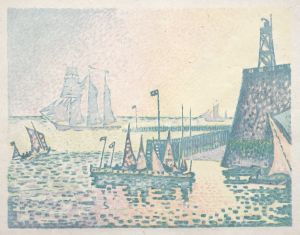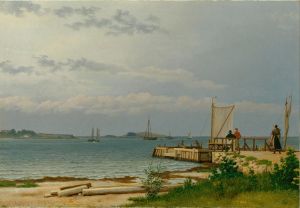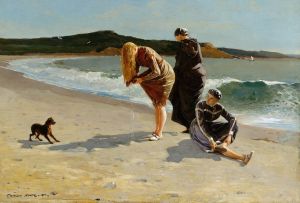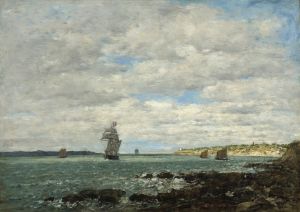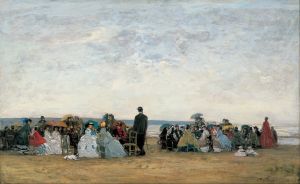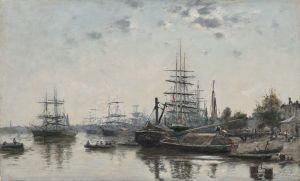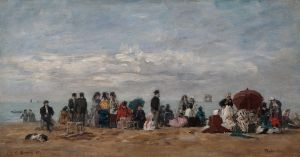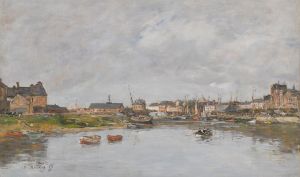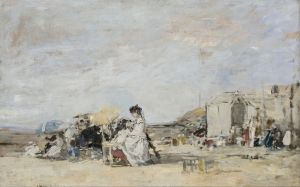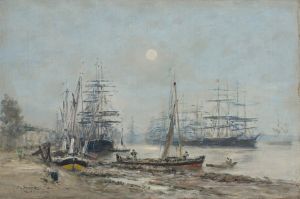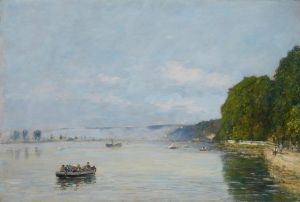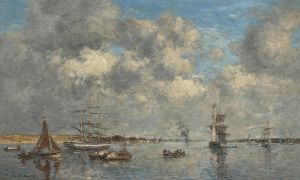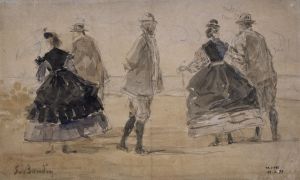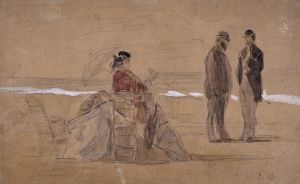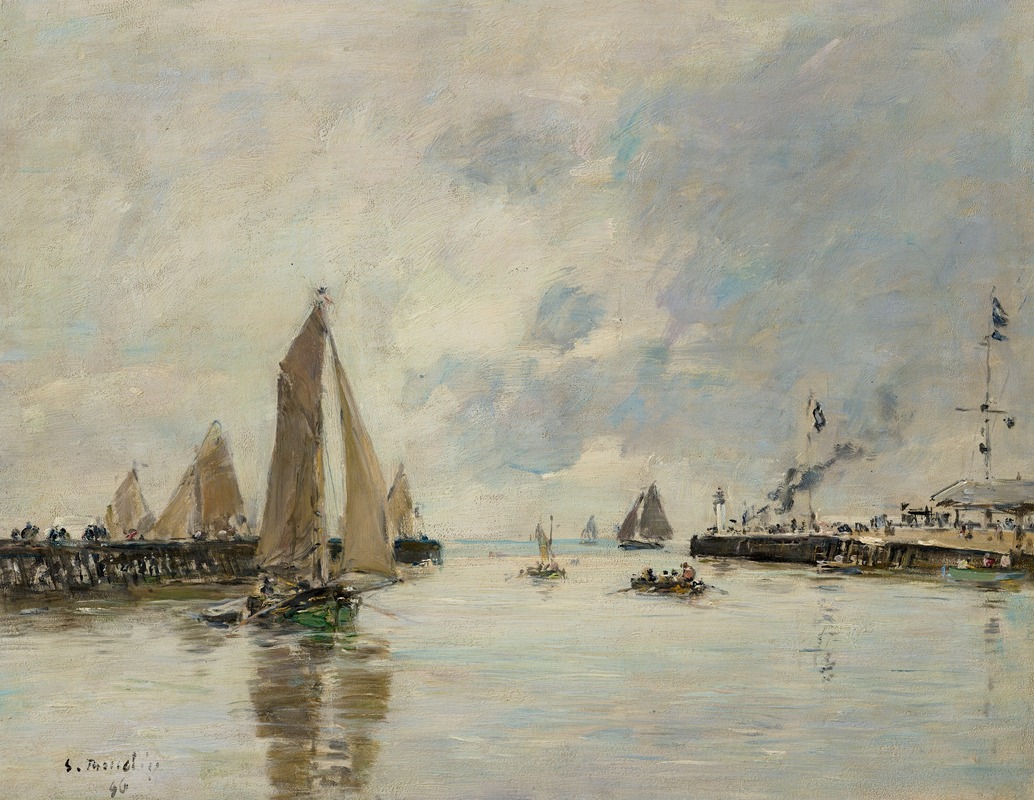
Trouville, Les jetées, marée haute
A hand-painted replica of Eugène Boudin’s masterpiece Trouville, Les jetées, marée haute, meticulously crafted by professional artists to capture the true essence of the original. Each piece is created with museum-quality canvas and rare mineral pigments, carefully painted by experienced artists with delicate brushstrokes and rich, layered colors to perfectly recreate the texture of the original artwork. Unlike machine-printed reproductions, this hand-painted version brings the painting to life, infused with the artist’s emotions and skill in every stroke. Whether for personal collection or home decoration, it instantly elevates the artistic atmosphere of any space.
Eugène Boudin, a prominent French painter, is renowned for his seascapes and beach scenes that capture the essence of the Normandy coast. One of his notable works, "Trouville, Les jetées, marée haute" (Trouville, The Jetties, High Tide), exemplifies his skill in portraying the interplay of light, water, and sky, which later influenced the Impressionist movement.
Boudin was born in Honfleur, Normandy, in 1824, and his early exposure to the maritime environment significantly shaped his artistic focus. He is often credited with being one of the first French landscape painters to paint outdoors, or en plein air, which allowed him to capture the transient effects of light and atmosphere with remarkable fidelity. This technique became a cornerstone of the Impressionist movement, and Boudin's work served as an inspiration to younger artists, including Claude Monet.
"Trouville, Les jetées, marée haute" is a depiction of the jetties at Trouville-sur-Mer, a popular seaside resort in Normandy. The painting captures the scene at high tide, a moment when the sea meets the constructed barriers of the jetties, creating a dynamic interaction between natural and man-made elements. Boudin's choice of subject reflects his fascination with the coastal life and the ever-changing moods of the sea.
In this painting, Boudin employs a soft, muted palette that conveys the atmospheric conditions typical of the Normandy coast. The sky, often a focal point in Boudin's works, is rendered with delicate brushstrokes that suggest the movement of clouds and the play of light. The water, depicted with a similar sensitivity, reflects the sky's hues, creating a harmonious balance between the two elements. The jetties themselves are portrayed with a more structured approach, providing a contrast to the fluidity of the natural surroundings.
Boudin's ability to capture the ephemeral qualities of light and weather is evident in "Trouville, Les jetées, marée haute." His attention to detail and his commitment to painting en plein air allowed him to convey the immediacy of the scene, inviting viewers to experience the moment as if they were standing on the shore themselves. This approach not only highlights Boudin's technical skill but also his deep appreciation for the beauty of the natural world.
Throughout his career, Boudin remained dedicated to depicting the coastal landscapes of Normandy and Brittany, producing a vast body of work that includes numerous studies of the sea, sky, and beachgoers. His paintings are characterized by their atmospheric quality and their ability to evoke a sense of place and time. "Trouville, Les jetées, marée haute" is a testament to Boudin's mastery of capturing the fleeting effects of nature, a skill that earned him recognition as a precursor to the Impressionist movement.
Today, Eugène Boudin's works are celebrated for their contribution to the development of modern art. His influence on Impressionism is widely acknowledged, and his paintings continue to be admired for their beauty and technical prowess. "Trouville, Les jetées, marée haute" remains an exemplary piece within his oeuvre, showcasing his unique ability to blend observation with artistic expression.





